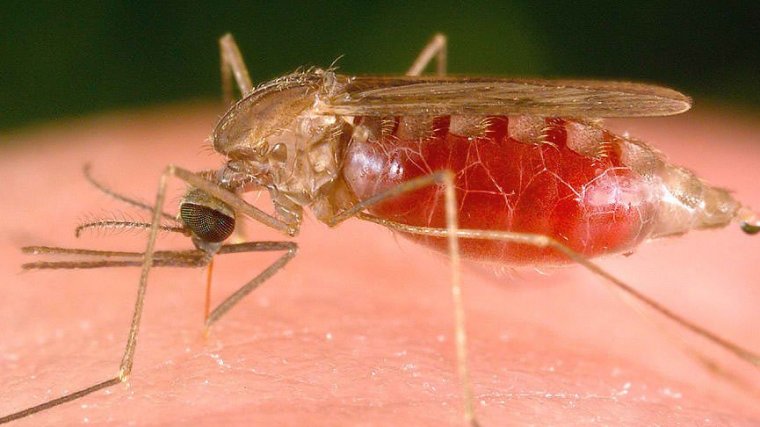| News / Science News |
Drug Prevents Malaria in High-Risk Region
NIH | SEPTEMBER 30, 2014
Malaria is caused by the Plasmodium parasite, which is transmitted to people through mosquitoes. More than 40% of the world’s population lives in at-risk regions. Malaria affects about 300-500 million people each year. Most cases can be successfully treated, but nearly 1 million still die of the disease every year, including about 800,000 children under age 5 in Sub-Saharan Africa.

Anopheles Freeborni Mosquito Pumping Blood. Image courtesy of CDC
Researchers have been developing vaccines and other preventive strategies to combat malaria. In addition to insecticide-treated bed nets, certain drugs can help prevent malaria in infants during the rainy season. However, they aren’t recommended in areas with a high risk of malaria year round and with high rates of drug resistance.
A team at the University of California, San Francisco, led by Dr. Grant Dorsey and colleagues in Kampala, Uganda, compared drugs to prevent infant malaria in areas with a high risk year round and high rates of drug resistance.
The team enrolled 400 infants in eastern Uganda. At 6 months of age, the children were randomly divided into 4 groups. They received either current preventative treatments—the antifolate drugs sulfadoxine-pyrimethamine (SP) monthly or trimethoprim-sulfamethoxozole (TS) daily, or a new combination drug called dihydroartemisinin-piperaquine (DP) once daily for 3 consecutive days each month. A fourth control group received the current standard of care, with no preventive drugs.
The drugs were administered by the families and recorded in a diary. Infants were routinely monitored at clinics. Families were also encouraged to take the children to the clinic any time they were ill. All families were given insecticide-treated bed nets and encouraged to use them. Treatments stopped at 24 months of age, and most children (340) were followed until age 3.
The researchers found that DP provided the most protection, with children in the DP group 58% less likely to develop malaria than those in the control group. TS treatment was moderately protective (28%), but SP treatment wasn't significantly different from the non-treatment group (7%).There were 3.02 malaria episodes per person year in the DP group, 5.21 for the TS group, 6.73 for the SP group, and 6.95 for the control group. There were no significant side effects from the drugs. In addition, after the interventions stopped, the rates of malaria in the groups were similar over the next year.
Notably, tests performed on the day malaria was diagnosed suggested that a complete dose of DP hadn’t been given to the infant in the previous month in half the malaria cases. These findings suggest that DP is a promising long-term preventative treatment for malaria in infants. However, ensuring proper dosing may be a challenge. Further studies will also be needed to clarify the long-term safety and efficacy of DP treatment.
YOU MAY ALSO LIKE




